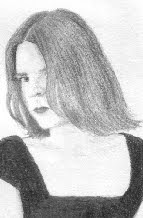Book to Movie Challenge #2
 At the age of ten, Fanny Price is taken from her impoverished, overcrowded Portsmouth home to live at Mansfield Park under the care of her aunts, Lady Bertram and Mrs. Norris. Painfully shy, her attempt to settle in isn’t helped by her being overshadowed by her more outgoing cousins, Maria and Julia, or her Aunt Norris’s efforts to make sure she doesn’t get ideas above her station. While she is being groomed for a lifelong role as companion to her Aunt Bertram, the one thing that makes life at Mansfield pleasant is the kindness of her cousin Edmund. By the time she’s seventeen Fanny does have hopes above her station, in spite of all Aunt Norris can do to put her in her place, but her dreams of marrying Edmund seem further away than ever when the Crawfords arrive in the neighbourhood. The dashing Henry flirts indiscriminately with both the Bertram sisters, even the engaged Maria, while Edmund falls for his sister Mary. Unfortunately for him, the lovely Miss Crawford is unwilling to give up material pleasures to marry a clergyman who will never be rich or keep a house in town. In the end, Fanny’s reservations about the pair are proved correct as scandal and heartbreak descend on Mansfield.
At the age of ten, Fanny Price is taken from her impoverished, overcrowded Portsmouth home to live at Mansfield Park under the care of her aunts, Lady Bertram and Mrs. Norris. Painfully shy, her attempt to settle in isn’t helped by her being overshadowed by her more outgoing cousins, Maria and Julia, or her Aunt Norris’s efforts to make sure she doesn’t get ideas above her station. While she is being groomed for a lifelong role as companion to her Aunt Bertram, the one thing that makes life at Mansfield pleasant is the kindness of her cousin Edmund. By the time she’s seventeen Fanny does have hopes above her station, in spite of all Aunt Norris can do to put her in her place, but her dreams of marrying Edmund seem further away than ever when the Crawfords arrive in the neighbourhood. The dashing Henry flirts indiscriminately with both the Bertram sisters, even the engaged Maria, while Edmund falls for his sister Mary. Unfortunately for him, the lovely Miss Crawford is unwilling to give up material pleasures to marry a clergyman who will never be rich or keep a house in town. In the end, Fanny’s reservations about the pair are proved correct as scandal and heartbreak descend on Mansfield.
I’ve been puzzling for days over what to write about this book. Like many Austen fans, I’m going to have to list it as my least favourite of her works. Fanny Price is spiritless, mousy, easily tired, and unable to enter into the fun and frivolity shared by most of her cousins. In fact, she is generally disapproving of said fun, and I had to remind myself of the mores of the time to appreciate her reasons. I did admire her adherence to her principles during the ill-fated amateur theatricals (even if it was motivated as much by shyness as by morals) but I never really warmed to her, or Edmund. I didn’t entirely believe in the happy ending, either; while they were a well-matched couple, bound to share a comfortable, respectable, and rather dull life together, he was still longing for Mary Crawford within twenty pages of the end. Although Austen cleverly left it up to the reader to decide how long it took for him to marry Fanny instead, I couldn’t help thinking, ‘rebound!’
The most interesting characters were the Crawfords; it was hard to decide whether they were as calculating as they sometimes seemed or just thoughtless. (I was in one of the computer labs at uni last week, and saw the title page of a business presentation on an unattended screen - authored by Mary Crawford. Since Austen’s Mary was a bit of a gold-digger, I’m guessing the real one’s parents weren’t familiar with Mansfield Park!) I was glad to see Aunt Norris get her just deserts at the end, but at the same time wished it could have happened after Fanny’s sister came to Mansfield; Susan would probably have been a match for her and I would have enjoyed seeing how the two of them put up with each other.
I have seen the film version of this, but it was a while ago so my memory’s a bit hazy. I do remember it being somewhat modernised; in the movie the scandalous couple were caught in flagrante, whereas in the book they simply ran off together. Unfortunately a favourite quote from the film - the foolish Mr Rushworth inviting people to his recently landscaped estate to see the new ruins - turned out to be a screenwriter’s invention. Another invention was Fanny’s fondness for writing; they actually used some of Austen’s early writing as hers. Beyond those few points all I can remember is an enjoyable movie; and being Austen, the book is enjoyable too, even if it is more serious and less sparkling than her other works.
Rating: B

















I love your reviews of ancient books! I do agree with your assessments of this novel; it is my least favorite of Jane Austen's novels (although I still enjoyed it quite a bit).
ReplyDeleteAn interesting exercise is to read this back-to-back with Charlotte Bronte's Jane Eyre. It has interesting parallels, even if the two novels end quite differently.